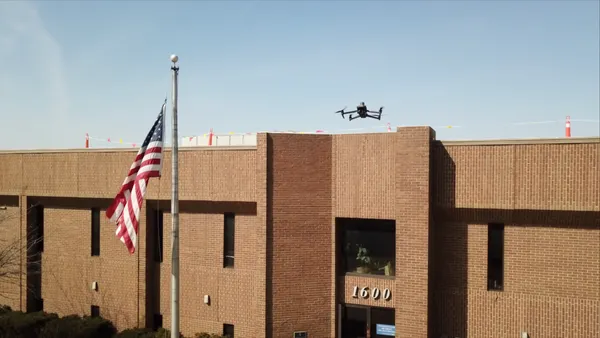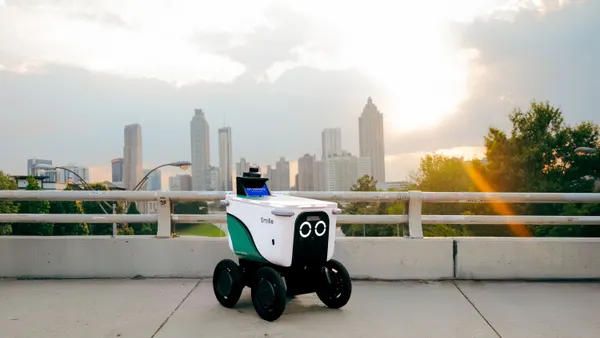Dive Brief:
- Delivery service Postmates will introduce a four-wheeled autonomous robot that it says will help — rather than replace — human delivery carriers. The "Serve" robots will debut in Los Angeles next year before rolling out to other cities.
- The robots can carry up to 50 pounds and can travel 30 miles on a single electric charge. Serve vehicles will run on a patented Socially-Aware-Navigation system and will be laden with sensors, including LiDAR and GPS.
- Serve is patterned to look like a face, with dynamic lighting in the eyes and a light ring that can signal movement to make it less intrusive on sidewalks. Customers will be able to interact with them via a touchscreen and cameras.
Dive Insight:
Amid fears that autonomous vehicles (AVs) and artificial intelligence (AI) will replace human workers, Postmates has emphasized that Serve will work alongside its existing workforce. A delivery in a crowded urban area might take a driver extra time to navigate, find parking and then walk to the house; Serve could take the delivery from vehicle to door while the driver idles or circles the block.
In a blog post introducing the service, Postmates says it has tested delivery routes in numerous states "without impacting a single Postmate, while [helping] retailers sell even more during peak periods and reducing car congestion."
"Our fleet complete millions of deliveries each month, and they are the ones best suited to navigate complex urban environments," the company continued. "Our goal is to help them do this easier and more efficiently."
Other tests with delivery robots have proven mixed. San Francisco had to take them off city streets in 2017 because they were interfering with pedestrians’ ability to navigate sidewalks, and introduced a limited permitting system to allow them back last spring. An autonomous delivery robot even caught fire in Berkeley, CA last week, according to The Daily Californian, while Dallas is looking to add them and Washington, DC is expanding its service after a successful trial period.
That means there’s likely to be a learning curve as Postmates figures out how Serve can best fit into the urban environment — and as users and workers grow familiar with interacting with the robots. Postmates is testing its software with senior living communities in California to refine human interaction, and has been working with community groups to discuss curb space solutions and how Serve can clear more room for alternative vehicles. TechCrunch reports that Postmates has even been working with the city of San Francisco on a regulatory framework, a way to get ahead of any problems before the city cracks down again.









